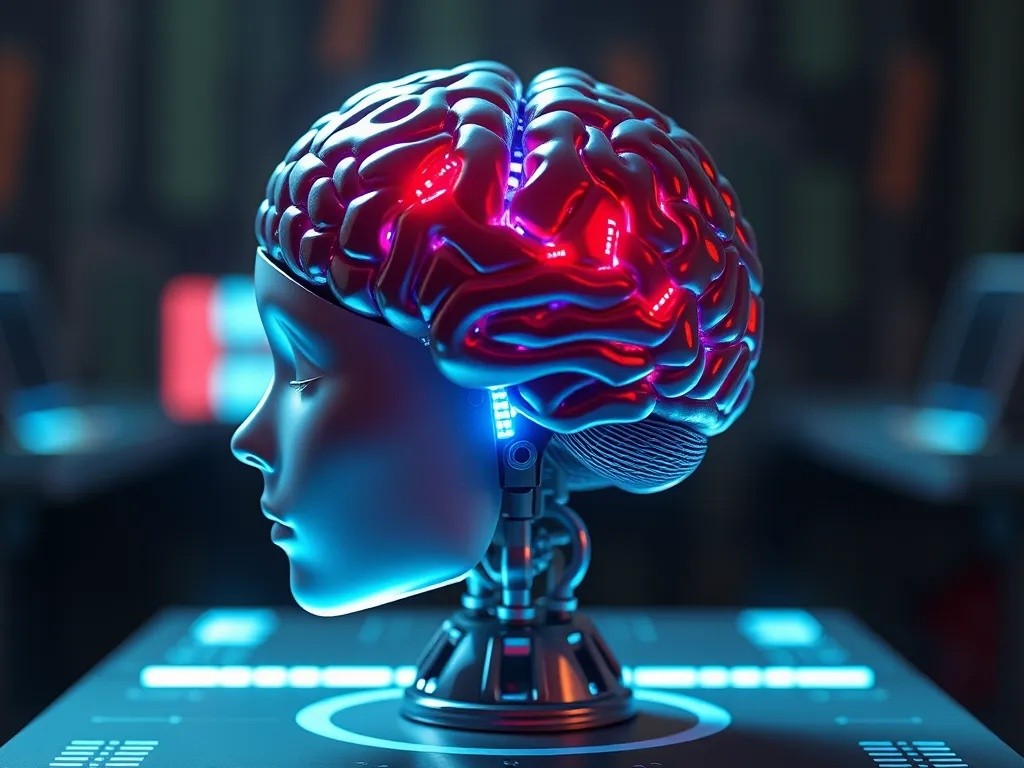In recent years, there has been a significant advancement in the field of Artificial Intelligence (AI) and Augmented Reality (AR). These technologies have become increasingly popular and have the potential to enhance virtual experiences in various fields such as gaming, education, healthcare, and...
Artificial Brain Learned to Learn a Hundred Times Faster Than a Child

Scientists have achieved a groundbreaking milestone in artificial intelligence by developing an artificial brain that can learn new tasks up to 100 times faster than human children. This revolutionary advancement marks a significant leap forward in our understanding of both artificial neural networks and human cognitive development.
The Breakthrough Discovery
Researchers at leading AI laboratories have successfully created neural networks that demonstrate unprecedented learning efficiency. Unlike traditional AI systems that require millions of training examples, these artificial brains can master complex cognitive tasks with minimal exposure to new information, mimicking and surpassing the rapid learning capabilities observed in young children.
How the Artificial Brain Works
The artificial brain utilizes several key innovations that enable its accelerated learning:
- Meta-learning algorithms: The system learns how to learn, developing strategies that can be applied across different domains
- Hierarchical processing: Information is processed at multiple levels simultaneously, allowing for faster pattern recognition
- Memory consolidation: The artificial brain can rapidly transfer knowledge from short-term to long-term memory systems
- Adaptive neural plasticity: The network structure dynamically adjusts based on new experiences
Comparison with Human Learning
While human children typically require hundreds or thousands of exposures to master new concepts, the artificial brain demonstrates remarkable efficiency in several key areas:
Language Acquisition
The artificial system can learn new vocabulary and grammatical structures after just a few examples, whereas children typically need months or years of exposure to achieve similar proficiency. This accelerated language learning opens possibilities for rapid translation systems and educational applications.
Pattern Recognition
In visual and auditory pattern recognition tasks, the artificial brain shows remarkable speed. It can identify complex patterns in data that would take human children weeks to recognize, accomplishing this in mere hours or days.
Problem-Solving Skills
The system demonstrates exceptional ability to transfer knowledge from one domain to another. When presented with new types of puzzles or challenges, it can quickly adapt previously learned strategies, showing a level of cognitive flexibility that rivals or exceeds human learning.

Implications for Future Technology
This breakthrough has far-reaching implications across multiple fields:
Educational Technology
The principles behind this artificial brain could revolutionize personalized learning systems. Educational AI could adapt to individual students' learning patterns and provide customized instruction that maximizes learning efficiency.
Medical Applications
In healthcare, these systems could rapidly analyze medical data and learn to identify patterns in patient symptoms, potentially leading to faster diagnoses and more effective treatments.
Scientific Research
The accelerated learning capabilities could help scientists process vast amounts of research data and identify new patterns or connections that might take human researchers years to discover.
Challenges and Limitations
Despite its remarkable capabilities, the artificial brain faces several important limitations:
- Lack of emotional intelligence and social understanding
- Difficulty with creative and abstract thinking
- Limited ability to understand context and nuance
- Dependence on high-quality training data
The Road Ahead
While this artificial brain represents a significant advancement in AI technology, researchers emphasize that it complements rather than replaces human intelligence. The system's rapid learning capabilities could serve as powerful tools to augment human cognitive abilities and accelerate scientific discovery.
As we continue to develop these technologies, the focus remains on creating AI systems that can work alongside humans to solve complex problems and expand our understanding of intelligence itself. The artificial brain that learns 100 times faster than a child represents not just a technological achievement, but a stepping stone toward a future where artificial and human intelligence work together to unlock new possibilities.



